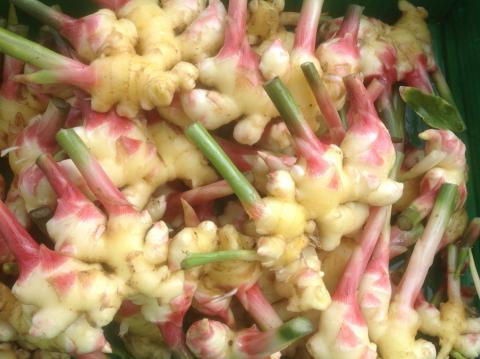New Research Report: Effects of Early Season Heating, Low Tunnels and Harvest Time Ginger Yields in NH, 2017

U.S. consumers are likely most familiar with the golden cured rhizomes of mature ginger (Zingiber officinale). Growers in the northeastern U.S. have been successfully producing "baby ginger," or rhizomes from young ginger plants grown for just a single growing season. Unlike mature ginger, the baby ginger is pink, tender, non-fibrous, and perishable.
In New England, ginger seed rhizomes are typically purchased from Hawaii, and they arrive in late February or early March. Rhizomes are sprouted and are then transplanted into high tunnel soils once the soil temperatures are consistently above 65F. Baby ginger is then dug for market in fall, typically starting in late September, but prior to frost.
We recently compiled our results from a one-year preliminary trial designed to answer the following questions:
- Does early-season heating increase end-of-season yields? (yes, but not a lot!)
- Could ginger be grown in a low tunnel rather than a high tunnel to decrease costs? (maybe, but it didn’t work for us!)
- Are yields and/or quality of ginger reduced by harvesting early, rather than late in the fall? (yes!)
Access the full report for details.
